Ajo Mountain Drive
We’re in a desert — a huge, dry, severe place that’s full of spikes and thorns, rocks and sand. It’s a callous, unforgiving place, and can easily disable or kill the unwary or un-prepared traveler. And it’s a garden. Stretched out before us is a rich, verdant expanse of gently-green plants, all adapted exquisitely to this harsh, inhospitable locale.
We took a different drive yesterday, and it was very pleasant – rugged, varied terrain and many displays of the impressive cacti. Despite the grey, lowering skies, we had a fine time. The road weaves up into and back out of the Ajo Mountains, with many views of the impressive peaks and formations, valleys below, and even glimpses of distant mountains and plains in Mexico. Not a wildly exceptional day, but certainly a peaceful one. Here’s the link to our track: https://share.delorme.com/gregilles
It’s always interesting to know the history of an area. We are in the middle of a huge geological zone which was formed and shaped by “stretching”.
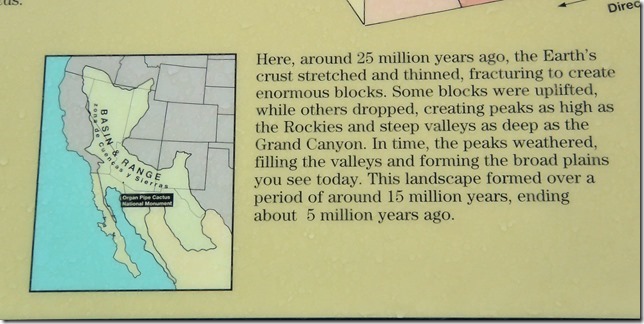
There are certainly deserts to be found, where the landscape is sere and dull, with little vegetation to accent the landscape. We have droned our way across our fair share of such. This is NOT one of those. This is a wildly populated garden of cacti, creosote, saltbush, bunch grass, mesquite, and many more indigenous plants. The recent rains, although slight, have awakened many of the residents, and they are shaking off the dust and showing off their chlorophyll. Too bad the overcast skies are holding back decent light for photography, but Paintshop Pro to the rescue and some of the color and contrast can be re-established.
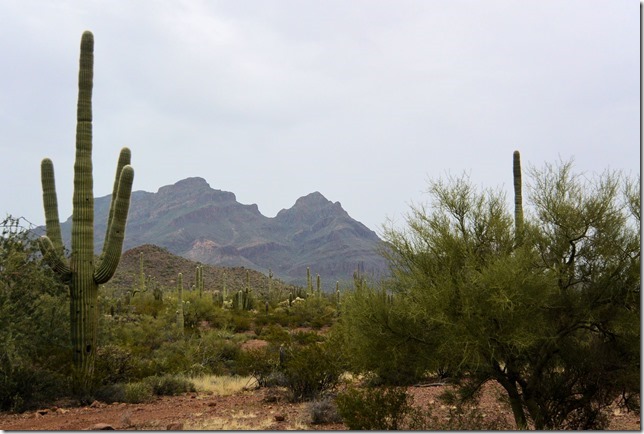
One of the grander Organ Pipe specimens, this huge beast has arms that are more than a foot diameter at the base.
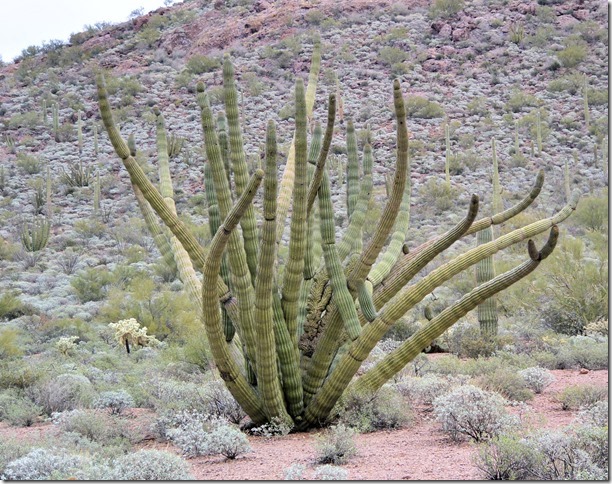
Nestled in the center is the odd “crest” formation. Nobody knows yet how or why these form.
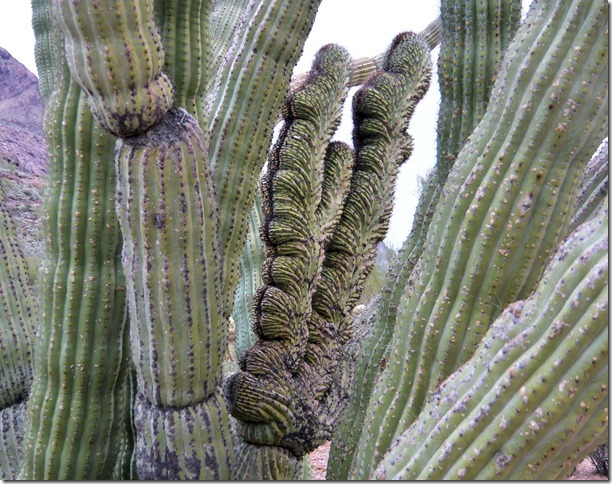
– – – and a much younger version of the same plant.
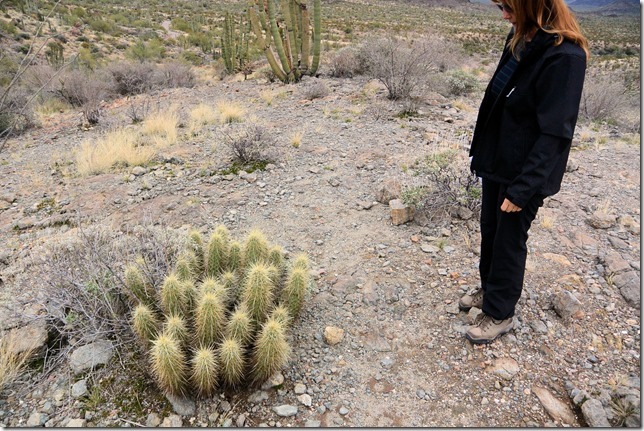
Far into the back country, this weather-created arch pair shows up. The top one is almost worn through, just a slender thread of rock remains. We wonder how long it will last – years? decades? centuries?
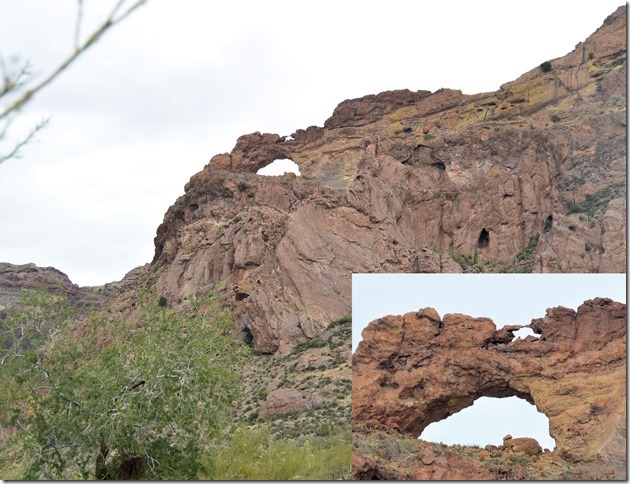
Around every turn in the road, the garden continues to stretch out before us.
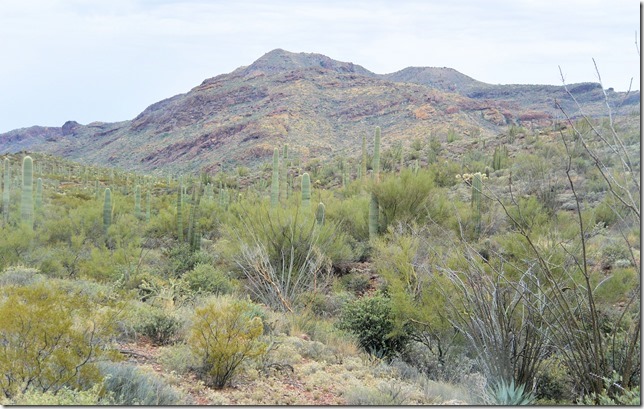
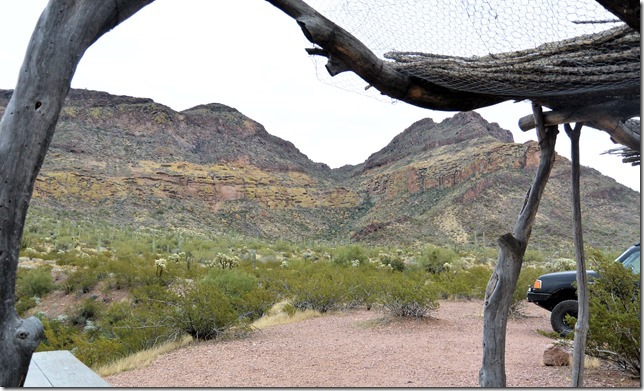
When freezing temperatures hit the Saguaro, the cells lose their strength. Sometimes the whole cactus breaks off or collapses, but more often, the weight of the arm breaks or twists the arm base joint. The result can be comical, or grotesque, or both.
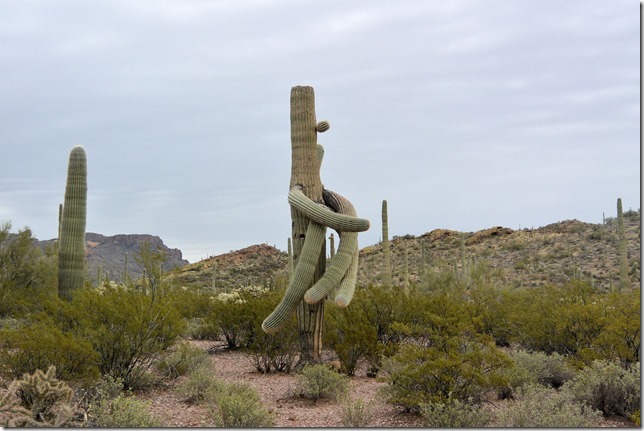
The Ocotillo is a fast responder – here, one branch is already welcoming the recent moisture.
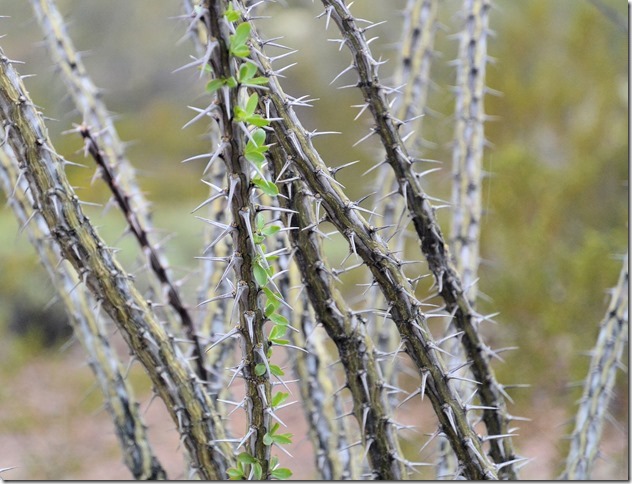
The drooping blossoms of this cholla are starting to ripen.
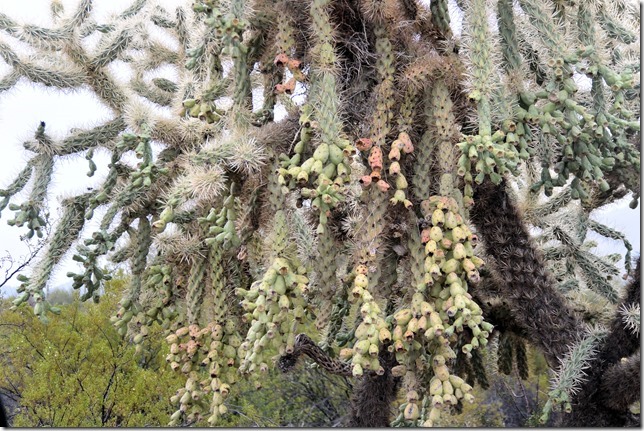
And speaking of cholla – – – this most pernicious, demonic of desert plants. These devils have microscopic barbs on their thorns. Once in, never out. You have to grow new skin before you get rid of cholla thorns. Not only that, but their propagation technique is to flake off seemingly furry little balls (but actually globes of needle-spikes). The spike-balls stick to ANYTHING passing by, so aggressively and tenaciously that the plant is often referred to as the “jumping cactus”. Here is photographic proof that chollas will eventually take over the continent, if not the entire world – – these little balls dropped to the ground and were actually witnessed moving toward the highway. Once there, they cling to the bumpers and tires of cars in their insidious quest for universal domination.
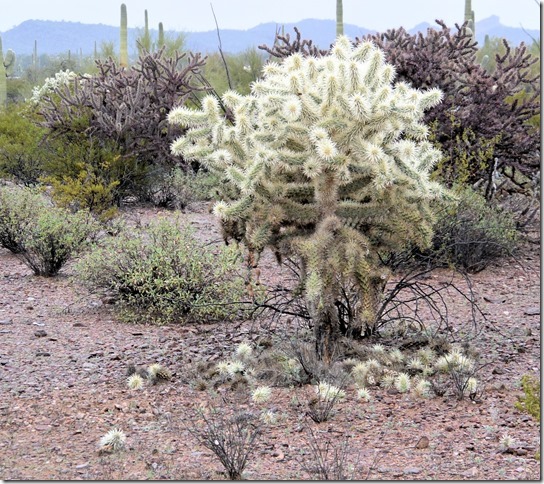
The big columnar cacti live for 100-200 years, but not forever. Along our way are some skeletons. The inner core is very woody and hard, a clear necessity for holding up what is essentially a giant water reservoir. Interestingly, structural material is carefully conserved – for instance, there’s no wood in the Organ Pipe stem core, because a tube is nearly as strong as a rod. In the Saguaro, the structural spines are only loosely connected – this allows flexibility in the column.
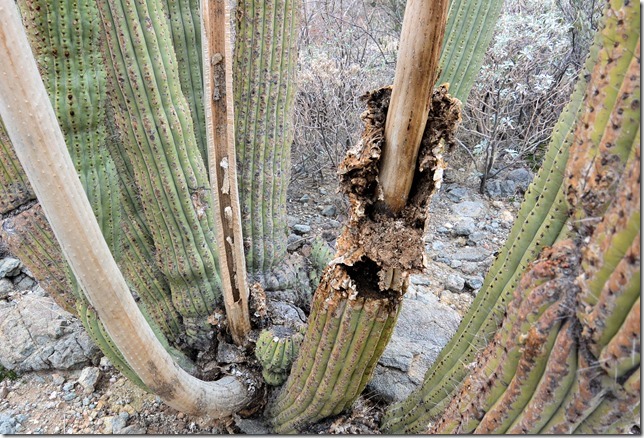
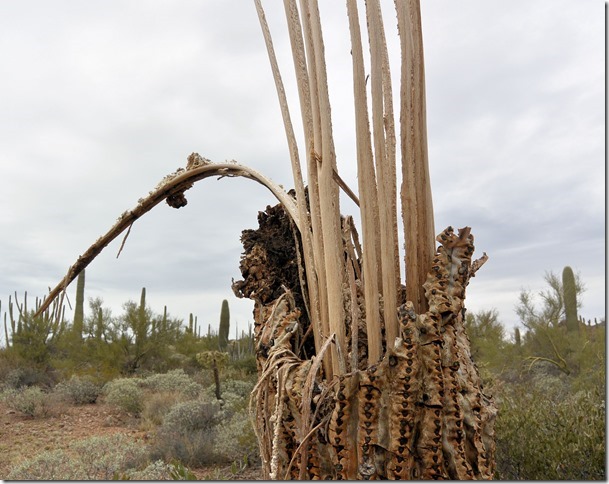
Incidentally, we’ve found out that the old tale of cutting open a cactus and squeezing the water out of it is a total myth. The fluids inside the cactus are so chemically laden that any ingestion incurs IMMEDIATE diarrhea (and of course consequent further dehydration).
It was a pretty nifty day, and our spirits were certainly not dampened by the intermittent raindrops. Leaving the mountains, one more snapshot of a Saguaro skeleton, then back to the campground.
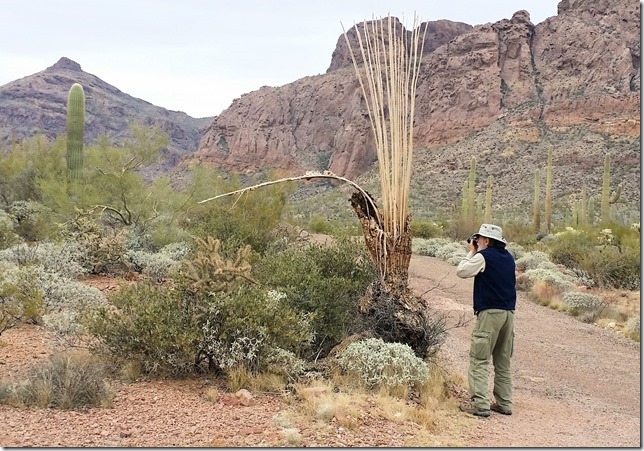
Back in camp, a covey of Gambell’s Quail scurry away to make room for us. Very pretty birds, a nice welcome “home”.
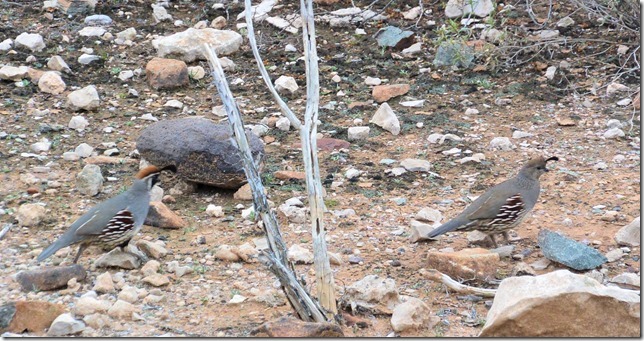

Greg, will you be bringing home any cacti samples?
Great post.
Fortunately/Unfortunately, there is NO collection of any plants, rocks, or other material from the Monument. It is possible to buy various cacti from commercial suppliers in Tucson, Phoenix, etc. But our home in the Santa Cruz mountains is too much of a climate shift for any of them to survive. We’ll have to be content with pictures.